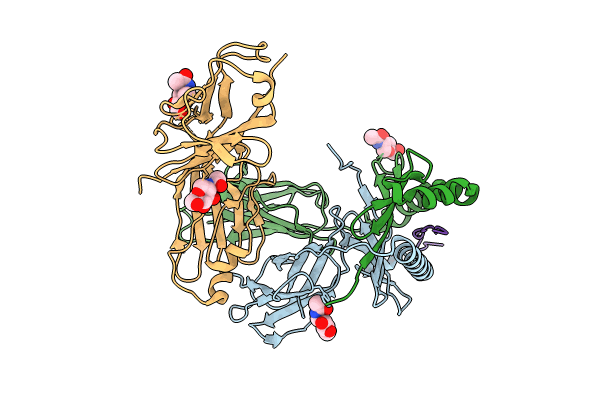
Deposition Date
2024-08-02
Release Date
2024-08-21
Last Version Date
2024-10-23
Entry Detail
PDB ID:
9CYM
Keywords:
Title:
Structure of LAG3 bound to the MHC class II molecule I-A(b)
Biological Source:
Source Organism:
Mus musculus (Taxon ID: 10090)
Homo sapiens (Taxon ID: 9606)
Homo sapiens (Taxon ID: 9606)
Host Organism:
Method Details:
Experimental Method:
Resolution:
3.84 Å
R-Value Free:
0.30
R-Value Work:
0.25
R-Value Observed:
0.26
Space Group:
P 65 2 2


